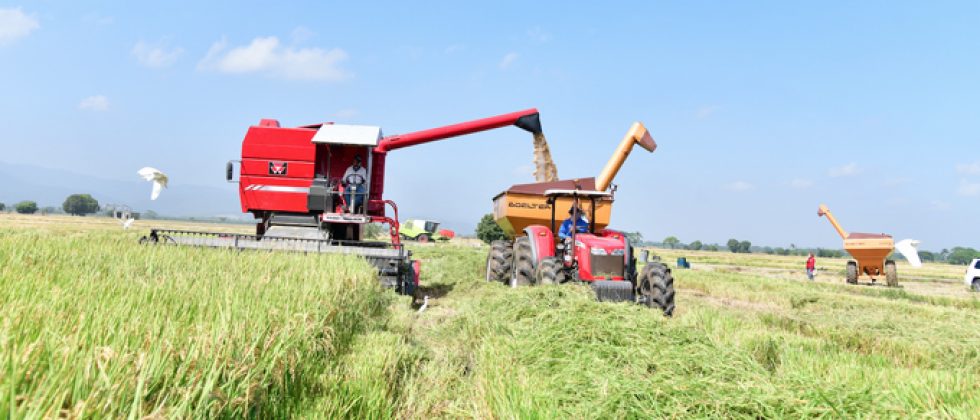news
“Ambiguity of the Dominican Economy”, an article by Dr. Leonel Fernández
June 20, 2022
During the process of reactivating the Dominican economy, specifically after the impact of the Covid-19 pandemic, four sectors were characterized by their dynamism: remittances, tourism, the free-zone sector, and construction.
The rebound experienced by these sectors was fundamentally due to the behavior of the U.S. economy. This shows that external factors have contributed, in an ambiguous way, positive and negative results in the performance of the national economy.
In the United States, where unemployment is at one of its lowest historical levels – 3.5% – consumerism has become one of the key elements in the growth of that country’s economy.
Americans buy, among other things, food, clothing, footwear, electrical appliances, cell phones and motor vehicles. A good part of the production of these goods is normally manufactured outside the United States.
As a consequence of this increase in North American consumerism, the export processing zones of the Dominican Republic experienced an expansion during the first quarter of 2021, hitting a 23.1% growth.
Similarly, construction expanded by 53.1%. During that year’s first quarter, tourism was literally at a stand-still; and for that reason, its numbers dropped by -23.3%.
Remittances reached the impressive figure of US$3.5 billion, specifically during the months of January to April of last year.
These reactivation levels, of the sectors mentioned above in the Dominican economy, were a direct result of the monetary and fiscal expansion policy of the United States government.
That, of course, was combined with a similar policy on the part of the national authorities, which generated levels of financial liquidity that were expressed in an increase in private investment, both national and foreign.
Naturally, some of those figures seem to be inflated as a result of the statistical rebound experienced. This is so because they have been calculated in relation to the year of the pandemic, 2020, and not related to 2019, which is the year where a standardized measurement index was made available.
Decline in National Production
Despite the statistical rebound that was added to the economic reactivation of 2021, the agricultural sector, however, showed mediocre results during the months of January to April 2021, growing only 1.3%.
Throughout 2021, despite the inflated figure for economic growth of 12.3% of the Gross Domestic Product (GDP), the agricultural sector only experienced a fragile expansion of 2.6%.
It is important to note that during the 12 years prior to the pandemic (2008-2019), the growth of the agricultural sector experienced an annual average growth of 4.5%.
The highest level was reached in 2009, reaching 10.2%, which represented close to 70% of the GDP growth for that year. It was a true golden age for the national agriculture sector, which corresponded to the then-slogan that stated that “Eating Comes First.”
However, as of 2013, the incidence of this sector in the composition of the gross domestic product plummeted, reaching only 1.8% in 2015. During the following three years it gradually recovered, reaching 4.2% in 2019.
By 2021, even with a statistical rebound of 12.3% of the GDP growth, the agricultural sector only accounted for 1.1% of that growth, one of the lowest ever registered in national history.
During the months of January and April of this year, 2022, the growth results of the national agricultural sector are no more promising than those of last year. On the contrary, they turn out to be extremely discouraging. Nothing else registered at 1.5%. Unfortunately, the month of April registered 0.2%.
If the numbers speak eloquently enough, it is clear that there is a notable oversight on the part of the current national authorities, at a time of global and national crisis, with respect to agriculture, a priority sector that is key for the development of our country.
At this time, it must be understood that food sovereignty and security are of the first order in order to guarantee the survival of the national population. Not understanding this situation could lead Dominicans towards hunger, total ruin and misery.
New Realities
During the first four months of 2021, the tourism sector, as we have already said, had not yet started its full recovery process. The airports were empty. The skies clear. The sector in a deep hole, with numbers that registered at -23.3%.
But, due to the relaxation of the mandatory confinement, to the savings made, the stimulus policies and the desire to travel and reconnect with nature, the number of tourists began to grow dramatically. During the months of January to April of this year there was an interannual growth of 39.9%.
It is, however, the only sector that is still growing after economic recovery began. However, local manufacturing, reflects a decrease from 14.5% last year to 4.4% today. The free-zone sector went from a high of 23.1% to 8.2%.
What has happened in the construction sector is striking. After going through the roof, registering a 53.1% during the first quarter of last year, right now it stands at 4.6%.
The remittance sector, although still relatively high, during the months of January to April of this year, it has already experienced a decrease of US$253 million, equivalent to 8.2%, compared to the same time period last year.
In short, what we want to express is that the figures for the first quarter of this year already show a slowdown, in comparison to 2021. The reason for this is essentially due to two reasons.
The first has to do with the change in monetary and fiscal stimulus policies, both by the United States and our own authorities. One factor has been the increase in interest rates and a decrease in liquidity in the financial markets as a way of combating inflation.
The second, of a geopolitical nature, corresponds to Russia’s war in Ukraine, which has generated high prices in fuel, commodities and fertilizers.
The fear is that the first of these policies will produce a recession; the second, that inflation remains.
The worst scenario, that stagflation becomes a reality.
In any case, we must understand that due to a combination of external and internal factors our economy is manifesting itself ambivalently, navigating in a new, confused and uncertain reality.





